 WASHINGTON, DC – New Brunswick Premier Holt announced on Monday that yet another subsidy package is coming from the Canadian federal government to prop up Canada’s massive excess lumber production capacity. “By pouring on yet more subsidies, Canada is making it perfectly clear that they are looking to circumvent U.S. trade measures, and neutralize President Trump’s Section 232 measures, imposed specifically to address Canada’s unfair trade in lumber. This cat and mouse game has to stop now,” stated Zoltan van Heyningen, Executive Director. “We urge President Trump to increase tariff measures on unfairly traded Canadian lumber until Canada gets the message that subsidies for its industry to the detriment of our industry are not tolerated,” added van Heyningen. “This is an issue of survival, prosperity, and growth of U.S. manufacturing, in local communities, and state economies nationwide.”
WASHINGTON, DC – New Brunswick Premier Holt announced on Monday that yet another subsidy package is coming from the Canadian federal government to prop up Canada’s massive excess lumber production capacity. “By pouring on yet more subsidies, Canada is making it perfectly clear that they are looking to circumvent U.S. trade measures, and neutralize President Trump’s Section 232 measures, imposed specifically to address Canada’s unfair trade in lumber. This cat and mouse game has to stop now,” stated Zoltan van Heyningen, Executive Director. “We urge President Trump to increase tariff measures on unfairly traded Canadian lumber until Canada gets the message that subsidies for its industry to the detriment of our industry are not tolerated,” added van Heyningen. “This is an issue of survival, prosperity, and growth of U.S. manufacturing, in local communities, and state economies nationwide.”

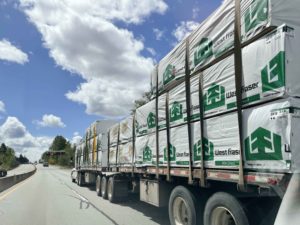 West Fraser-100 Mile Lumber employees like Kris Taylor are taking each day as it comes, following the announcement of the
West Fraser-100 Mile Lumber employees like Kris Taylor are taking each day as it comes, following the announcement of the 
 PRINCE ALBERT, Saskatchewan — The sale of a defunct Prince Albert pulp and paper mill from Domtar to the Ontario-based BMI Group has ended plans to re-open the mill and sparked a search for industrial business tenants for the site. “The site will never be a pulp mill again. That is for sure,” said Chris Rickett, BMI Group’s head of government and community relations. After eight months of negotiations, BMI purchased the former Weyerhaeuser Prince Albert pulp mill site and buildings from Domtar, Canada’s largest pulp and paper company. …The former Weyerhauser Prince Albert Pulp and Paper Mill ceased operations in 2006. Approximately 700 workers at the mill lost their jobs, with further indirect job losses in the forestry industry. A spokesperson for the One Sky Forest Products said it is gathering investors to build an oriented strand board (OSB) manufacturing plant on the former mill site.
PRINCE ALBERT, Saskatchewan — The sale of a defunct Prince Albert pulp and paper mill from Domtar to the Ontario-based BMI Group has ended plans to re-open the mill and sparked a search for industrial business tenants for the site. “The site will never be a pulp mill again. That is for sure,” said Chris Rickett, BMI Group’s head of government and community relations. After eight months of negotiations, BMI purchased the former Weyerhaeuser Prince Albert pulp mill site and buildings from Domtar, Canada’s largest pulp and paper company. …The former Weyerhauser Prince Albert Pulp and Paper Mill ceased operations in 2006. Approximately 700 workers at the mill lost their jobs, with further indirect job losses in the forestry industry. A spokesperson for the One Sky Forest Products said it is gathering investors to build an oriented strand board (OSB) manufacturing plant on the former mill site. 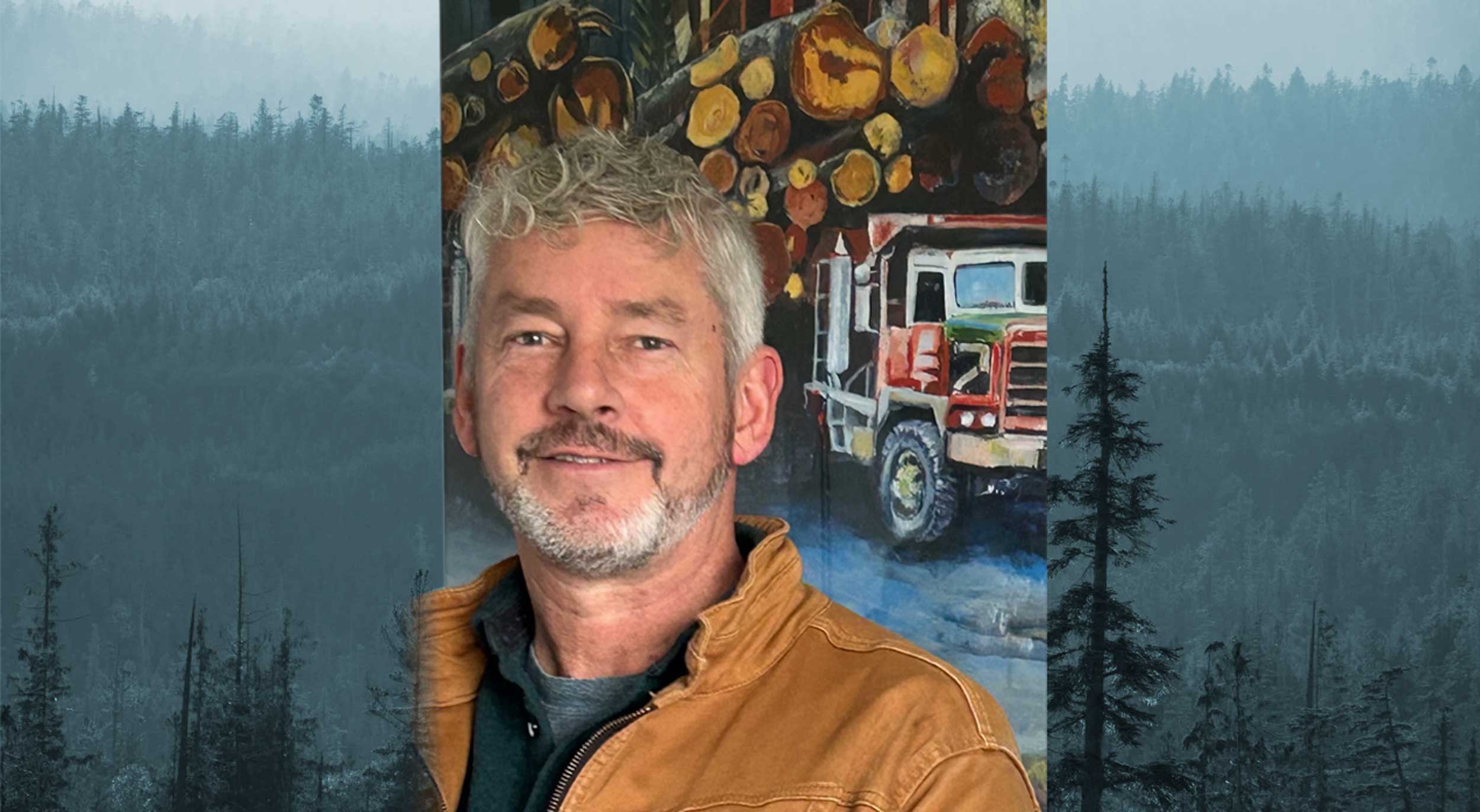
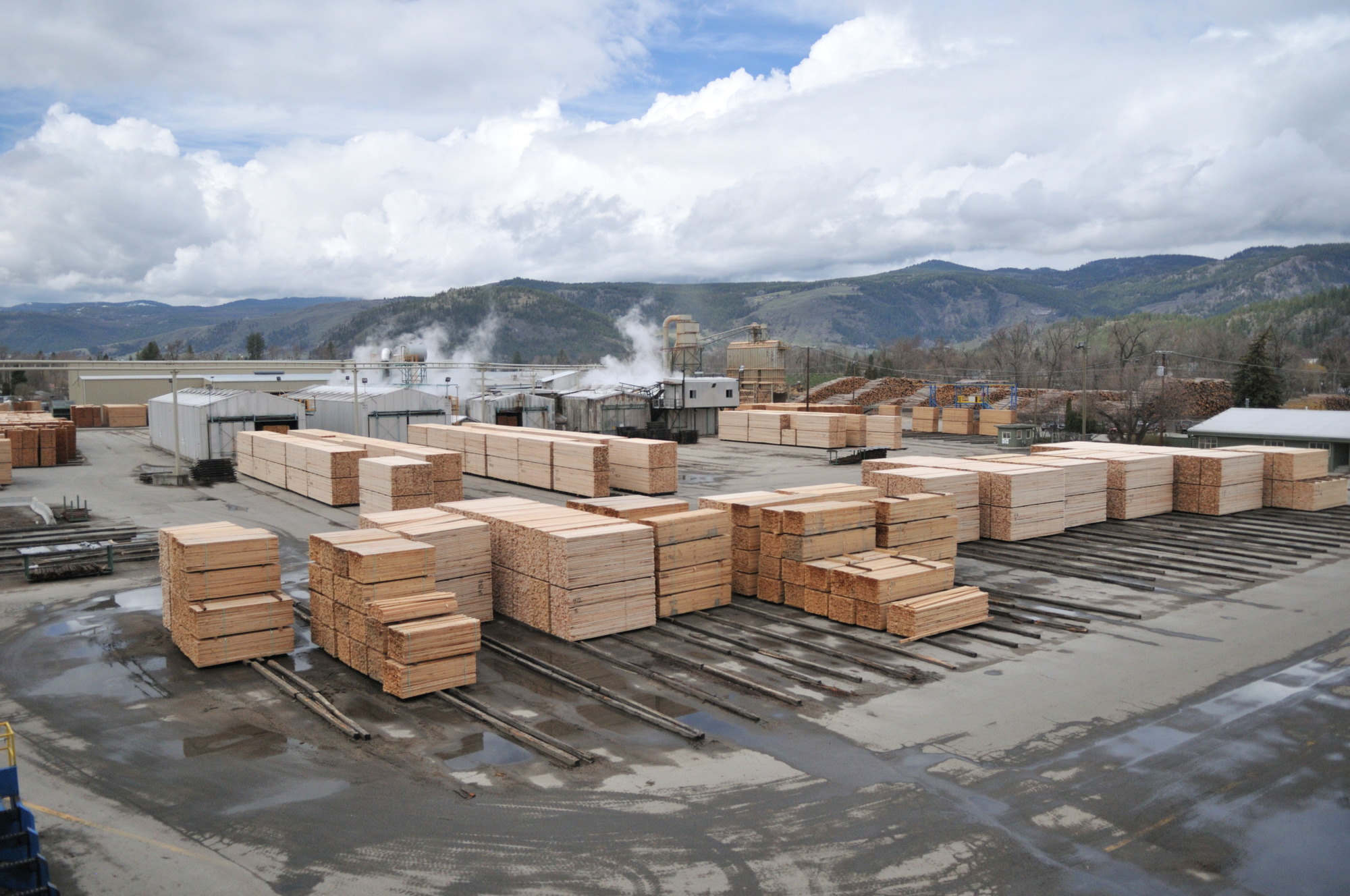

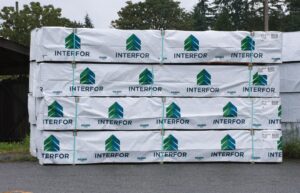 EAR FALLS, Ontario — Northerners know what it means to put in an honest day’s work. …But in Ear Falls, that northern way of life is under threat. In October, Interfor announced the indefinite closure of the Ear Falls sawmill. Over 160 jobs have vanished, and the community is left waiting—hoping that leaders in Ottawa and Toronto will step up, restore these jobs, and fight for the future of Ear Falls. But Ear Falls did not just stand by, they united. Workers, families, municipal leaders, Unifor, and MPP Sol Mamakwa stood shoulder to shoulder to demand action. …But the response from Premier Ford and Prime Minster Carney? Deafening silence. The indefinite closure of Ear Falls’ sawmill, and the silence from Conservative and Liberal governments lay bare the legacy of under-development, under-investment, and under-representation that holds Northerners back.
EAR FALLS, Ontario — Northerners know what it means to put in an honest day’s work. …But in Ear Falls, that northern way of life is under threat. In October, Interfor announced the indefinite closure of the Ear Falls sawmill. Over 160 jobs have vanished, and the community is left waiting—hoping that leaders in Ottawa and Toronto will step up, restore these jobs, and fight for the future of Ear Falls. But Ear Falls did not just stand by, they united. Workers, families, municipal leaders, Unifor, and MPP Sol Mamakwa stood shoulder to shoulder to demand action. …But the response from Premier Ford and Prime Minster Carney? Deafening silence. The indefinite closure of Ear Falls’ sawmill, and the silence from Conservative and Liberal governments lay bare the legacy of under-development, under-investment, and under-representation that holds Northerners back.
 KINGSPORT, Tennessee — About 300 gallons of waste leaked from Domtar’s mill site to Domtar Park, according to Tennessee Department of Environment and Conservation documents. Of the 300 gallons of waste, which included liquids and solids, about 150 gallons were recovered. The mill’s 25-acre lagoon was lowered four to six inches as a precautionary measure in response to the leak, Domtar told the Times News. In its letter to TDEC, Domtar said no detrimental effects were observed to the property or the environment due to the “organic nature” of the lagoon’s contents. Domtar also said it believed the waste found at Domtar Park was “partially” treated through its wastewater treatment process. “The leak did not reach waters of the state and Domtar representatives indicated mitigation was taking place. No further action was taken by the department,” said TDEC spokesperson Jennifer Donnals in a statement to Six Rivers Media.
KINGSPORT, Tennessee — About 300 gallons of waste leaked from Domtar’s mill site to Domtar Park, according to Tennessee Department of Environment and Conservation documents. Of the 300 gallons of waste, which included liquids and solids, about 150 gallons were recovered. The mill’s 25-acre lagoon was lowered four to six inches as a precautionary measure in response to the leak, Domtar told the Times News. In its letter to TDEC, Domtar said no detrimental effects were observed to the property or the environment due to the “organic nature” of the lagoon’s contents. Domtar also said it believed the waste found at Domtar Park was “partially” treated through its wastewater treatment process. “The leak did not reach waters of the state and Domtar representatives indicated mitigation was taking place. No further action was taken by the department,” said TDEC spokesperson Jennifer Donnals in a statement to Six Rivers Media.


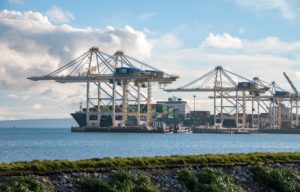 EU and UK timber industry organisations have declared their “unwavering commitment” against imports of Russian and Belarusian wood products. In an announcement published on the TDUK website, CEI-Bois (European Confederation of Woodworking Industries), ETTF (European Timber Trade Federation), EOS (European Organisation of the Sawmill Industry), and TDUK (Timber Development UK) – have signed the united statement reaffirming the EU and UK woodworking industry’s and wood traders’ strong and unwavering commitment to complying with applicable legislation governing the import of wood products from Russia or Belarus. …Sanctions on wood from Russia and Belarus were introduced years ago, yet residual quantities of prohibited wood regrettably remain in circulation in Europe. …“Our message is clear: the EU and UK wood industry value chain is united in its determination not to import Russian and Belarusian wood. Integrity is a core value of our industry, and we reject illegal and unethical practices by any company.”
EU and UK timber industry organisations have declared their “unwavering commitment” against imports of Russian and Belarusian wood products. In an announcement published on the TDUK website, CEI-Bois (European Confederation of Woodworking Industries), ETTF (European Timber Trade Federation), EOS (European Organisation of the Sawmill Industry), and TDUK (Timber Development UK) – have signed the united statement reaffirming the EU and UK woodworking industry’s and wood traders’ strong and unwavering commitment to complying with applicable legislation governing the import of wood products from Russia or Belarus. …Sanctions on wood from Russia and Belarus were introduced years ago, yet residual quantities of prohibited wood regrettably remain in circulation in Europe. …“Our message is clear: the EU and UK wood industry value chain is united in its determination not to import Russian and Belarusian wood. Integrity is a core value of our industry, and we reject illegal and unethical practices by any company.”
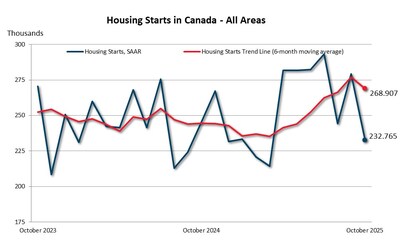

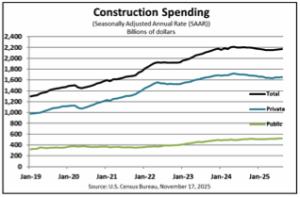 The US Census Bureau announced the following value put in place construction statistics. …Construction spending during August 2025 was estimated at a seasonally adjusted annual rate of $2,169.5 billion, 0.2 percent (±0.7 percent) above the revised July estimate of $2,165.0 billion. The August figure is 1.6 percent (±1.5 percent) below the August 2024 estimate of $2,205.3 billion. During the first eight months of this year, construction spending amounted to $1,438.0 billion, 1.8 percent (±1.0 percent) below the $1,463.7 billion for the same period in 2024. …Spending on private construction was at a seasonally adjusted annual rate of $1,652.1 billion, 0.3 percent (±0.5 percent) above the revised July estimate of $1,647.5 billion. …In August, the estimated seasonally adjusted annual rate of public construction spending was $517.3 billion, virtually unchanged from (±1.2 percent) the revised July estimate of $517.5 billion.
The US Census Bureau announced the following value put in place construction statistics. …Construction spending during August 2025 was estimated at a seasonally adjusted annual rate of $2,169.5 billion, 0.2 percent (±0.7 percent) above the revised July estimate of $2,165.0 billion. The August figure is 1.6 percent (±1.5 percent) below the August 2024 estimate of $2,205.3 billion. During the first eight months of this year, construction spending amounted to $1,438.0 billion, 1.8 percent (±1.0 percent) below the $1,463.7 billion for the same period in 2024. …Spending on private construction was at a seasonally adjusted annual rate of $1,652.1 billion, 0.3 percent (±0.5 percent) above the revised July estimate of $1,647.5 billion. …In August, the estimated seasonally adjusted annual rate of public construction spending was $517.3 billion, virtually unchanged from (±1.2 percent) the revised July estimate of $517.5 billion. 
 The Supreme Court could decide on the legality of many of the Trump administration’s tariffs within months, but the ruling won’t impact many of the administration’s levies on imported construction materials such as lumber, steel, aluminum and copper. …Many construction materials imported into the US will remain subject to hefty tariffs regardless of how the Supreme Court rules. Some homebuilding leaders warn that home prices could increase by thousands of dollars beginning next year. …Cristian deRitis, at Moody’s Analytics, said “While importers of other building materials might experience some relief, this could be temporary. The administration may choose to expand the Section 232 tariffs as a fallback strategy if the reciprocal tariffs are invalidated,” deRitis said. …There hasn’t yet been an increase in lumber prices, but NAHB Chairman Buddy Hughes forecasted that the lumber tariffs “will create additional headwinds for an already challenged housing market by further raising construction and renovation costs.”
The Supreme Court could decide on the legality of many of the Trump administration’s tariffs within months, but the ruling won’t impact many of the administration’s levies on imported construction materials such as lumber, steel, aluminum and copper. …Many construction materials imported into the US will remain subject to hefty tariffs regardless of how the Supreme Court rules. Some homebuilding leaders warn that home prices could increase by thousands of dollars beginning next year. …Cristian deRitis, at Moody’s Analytics, said “While importers of other building materials might experience some relief, this could be temporary. The administration may choose to expand the Section 232 tariffs as a fallback strategy if the reciprocal tariffs are invalidated,” deRitis said. …There hasn’t yet been an increase in lumber prices, but NAHB Chairman Buddy Hughes forecasted that the lumber tariffs “will create additional headwinds for an already challenged housing market by further raising construction and renovation costs.”







 Logs are a familiar sight on the beaches along the coast of Vancouver Island and Haida Gwaii and are often viewed positively, as they can stabilize the banks, be used for firewood or act as benches by beach-goers. However, new research from the University of Victoria (UVic) shows that these logs are not as innocuous as they seem. According to a study published by UVic biologist Tom Reimchen and two of his students, free-floating logs that wash ashore, referred to as drift logs, are causing widespread destruction of rocky intertidal ecosystems communities along the coast of Western Canada. …While drift logs may seem rather stable to the casual observer, more than 90 per cent of logs are displaced annually, and log movement during storms is frequent and extensive. This movement disrupts the ecological environment in the intertidal zone—the stretch of beach between the highest high tide and the lowest low tide. …This research was published in
Logs are a familiar sight on the beaches along the coast of Vancouver Island and Haida Gwaii and are often viewed positively, as they can stabilize the banks, be used for firewood or act as benches by beach-goers. However, new research from the University of Victoria (UVic) shows that these logs are not as innocuous as they seem. According to a study published by UVic biologist Tom Reimchen and two of his students, free-floating logs that wash ashore, referred to as drift logs, are causing widespread destruction of rocky intertidal ecosystems communities along the coast of Western Canada. …While drift logs may seem rather stable to the casual observer, more than 90 per cent of logs are displaced annually, and log movement during storms is frequent and extensive. This movement disrupts the ecological environment in the intertidal zone—the stretch of beach between the highest high tide and the lowest low tide. …This research was published in 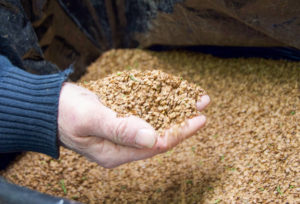 BANFF, Alberta – Because of this importance of whitebark pine, Parks Canada is working across the mountain national parks of Banff, Yoho, Kootenay, Jasper, Revelstoke-Glacier and Waterton Lakes to try to give endangered whitebark pine a fighting chance. The higher elevation trees, which can live to be 1,000 years old, are dying off at an alarming rate. Climate change, more than a century of wildfire suppression and mountain pine beetle are all playing a role, but the biggest threat comes from white pine blister rust. …One clear sign of infection is orange blisters on the bark. McLellan said less than one per cent of whitebark pine are naturally resistant to the rust. …Charlie McLellan said last summer about 6,500 rust-resistant saplings were planted in the Banff National Park field unit and in Kootenay National Park – made up of whitebark pine and limber pine, another species recommended to be listed as endangered.
BANFF, Alberta – Because of this importance of whitebark pine, Parks Canada is working across the mountain national parks of Banff, Yoho, Kootenay, Jasper, Revelstoke-Glacier and Waterton Lakes to try to give endangered whitebark pine a fighting chance. The higher elevation trees, which can live to be 1,000 years old, are dying off at an alarming rate. Climate change, more than a century of wildfire suppression and mountain pine beetle are all playing a role, but the biggest threat comes from white pine blister rust. …One clear sign of infection is orange blisters on the bark. McLellan said less than one per cent of whitebark pine are naturally resistant to the rust. …Charlie McLellan said last summer about 6,500 rust-resistant saplings were planted in the Banff National Park field unit and in Kootenay National Park – made up of whitebark pine and limber pine, another species recommended to be listed as endangered.
 The timber industry built around the Tongass National Forest in Alaska got a boost from the Trump administration’s latest trade deal with China. In settling part of its trade battles, China agreed to accept imports of US sawlogs for the first time since banning them in March due to worries about insect pests. The resumption of exports — effective Nov. 12 — would help companies like Alcan Forest Products in Ketchikan, which for years has sold unprocessed logs to China. The latest agreement lasts one year, said Tessa Axelson, executive director of the Alaska Forest Association. A 10% tariff on products from both countries would still apply. …Southeast Alaska’s timber industry relies heavily on the nearly 17-million-acre Tongass, although most of the forest is off-limits to logging. Federal law allows the export of unprocessed logs, a practice long banned elsewhere to protect the domestic lumber processing industry. [to access the full story an E&ENews subscription is required]
The timber industry built around the Tongass National Forest in Alaska got a boost from the Trump administration’s latest trade deal with China. In settling part of its trade battles, China agreed to accept imports of US sawlogs for the first time since banning them in March due to worries about insect pests. The resumption of exports — effective Nov. 12 — would help companies like Alcan Forest Products in Ketchikan, which for years has sold unprocessed logs to China. The latest agreement lasts one year, said Tessa Axelson, executive director of the Alaska Forest Association. A 10% tariff on products from both countries would still apply. …Southeast Alaska’s timber industry relies heavily on the nearly 17-million-acre Tongass, although most of the forest is off-limits to logging. Federal law allows the export of unprocessed logs, a practice long banned elsewhere to protect the domestic lumber processing industry. [to access the full story an E&ENews subscription is required]


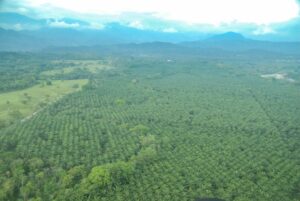 BRAZIL — More than 30 years after the world first came together in Brazil to tackle climate change, global temperatures are still rising and so is impatience with talk over action. …For decades, protecting forests felt like an uphill struggle. Now, that’s changing. Forest nations and partners around the world are rewriting the economics of conservation, turning forest stewardship into an engine of prosperity and sustainable growth. In Guyana, our pioneering system for high-integrity carbon credits has shown how trees can be worth more standing than cut down. Brazil’s leadership on the new Tropical Forests Forever Facility (TFFF) is creating a predictable, long-term finance reward for countries to preserve their forests and direct proceeds to Indigenous Peoples and local communities. Across the world, investors are beginning to recognise that keeping forests standing is not just good for the planet, it’s good for their bottom line.
BRAZIL — More than 30 years after the world first came together in Brazil to tackle climate change, global temperatures are still rising and so is impatience with talk over action. …For decades, protecting forests felt like an uphill struggle. Now, that’s changing. Forest nations and partners around the world are rewriting the economics of conservation, turning forest stewardship into an engine of prosperity and sustainable growth. In Guyana, our pioneering system for high-integrity carbon credits has shown how trees can be worth more standing than cut down. Brazil’s leadership on the new Tropical Forests Forever Facility (TFFF) is creating a predictable, long-term finance reward for countries to preserve their forests and direct proceeds to Indigenous Peoples and local communities. Across the world, investors are beginning to recognise that keeping forests standing is not just good for the planet, it’s good for their bottom line.